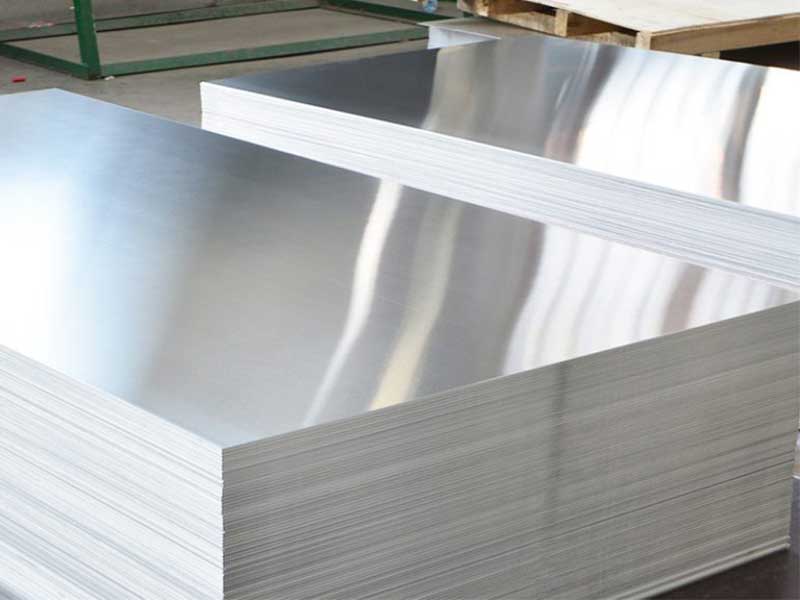5005 5052 Anodized Aluminum Sheet for Traffic Sign
In the realm of traffic safety and signage, material durability, corrosion resistance, and visual clarity are paramount. The 5005 and 5052 anodized aluminum sheets are extensively utilized in manufacturing traffic signs due to their excellent mechanical properties and aesthetic finish. These aluminum alloys, when anodized, offer superior surface protection, enhanced longevity, and increased reflectivity, making them ideal for harsh outdoor environments.
Both 5005 and 5052 belong to the aluminum-magnesium series (5xxx series), known for their excellent corrosion resistance, good formability, and moderate-to-high strength.
| Property | 5005 Aluminum Alloy | 5052 Aluminum Alloy |
|---|---|---|
| Aluminum Content (%) | ≥ 97.5 | ≥ 97.25 |
| Magnesium Content (%) | 0.8 - 1.2 | 2.2 - 2.8 |
| Tensile Strength (MPa) | 145 - 190 | 228 - 316 |
| Yield Strength (MPa) | ~95 | 193 - 272 |
| Elongation (%) | ~12 | 11 - 20 |
| Density (g/cm³) | 2.68 | 2.68 |
| Corrosion Resistance | Very Good | Excellent |
| Weldability | Good | Excellent |
Features of Anodized 5005 and 5052 Aluminum Sheets
1. Enhanced Corrosion Resistance
Anodizing creates a thick, stable oxide layer on the surface, improving resistance to oxidation and environmental pollutants. This makes the sheets particularly resistant to salt spray, moisture, and UV radiation — crucial for outdoor traffic signs.
2. Superior Protective Finish
The anodized surface safeguards against scratches and wear, maintaining legibility and appearance over years of service, even in areas with extreme weather conditions such as heavy rains, freezing cold, or intense sun exposure.
3. Optimal Visual Reflectivity and Printability
The anodized layer provides a good base for reflective sheeting and inks used in traffic signs, enabling high-contrast, long-lasting graphics and symbols that comply with road safety regulations.
4. Lightweight yet Sturdy
With low density and high strength-to-weight ratio, these aluminum alloys are easy to handle and install while offering robust mechanical support for mounting on poles or frames.
5. Excellent Formability and Fabrication
Both alloys can be easily cut, punched, bent, and finished according to custom traffic sign designs without compromising quality, providing manufacturers with versatile manufacturing options.
Chemical Composition
| Element | 5005 (%) | 5052 (%) |
|---|---|---|
| Aluminum | Balance | Balance |
| Magnesium | 0.8 - 1.2 | 2.2 - 2.8 |
| Silicon | ≤ 0.3 | ≤ 0.25 |
| Iron | ≤ 0.7 | ≤ 0.4 |
| Copper | ≤ 0.2 | ≤ 0.1 |
| Manganese | 0.2 - 0.7 | 0.10 - 0.50 |
| Chromium | ≤ 0.1 | 0.15 - 0.35 |
| Zinc | ≤ 0.1 | ≤ 0.1 |
| Titanium | ≤ 0.05 | ≤ 0.03 |
Typical Mechanical Properties (Anodized; Thickness 1.0 - 2.0 mm)
| Property | 5005 Alloy | 5052 Alloy |
|---|---|---|
| Tensile Strength | 150 - 185 MPa | 228 - 275 MPa |
| Yield Strength | ~95 MPa | 193 - 260 MPa |
| Elongation | 10 - 15 % | 12 - 16 % |
| Hardness (HV) | 35 - 65 | 50 - 70 |
Applications in Traffic Signs
- Traffic Control Signs: Stop signs, yield signs, speed limits, and caution symbols benefit from the long life and stability of anodized 5005 and 5052 sheets.
- Reflective Sign Bases: Excellent surface for bonding reflective adhesive sheeting for high night-time visibility.
- Street Name Signs: Lightweight and durable surface supports legibility and withstands vandalism.
- Road Work and Safety Signs: Maintains structural integrity and visual clarity in rough handling and harsh conditions.
- Highway Information Panels: Resistant to corrosion and fading from prolonged exposure to sunlight and pollution.
https://www.alusheets.com/a/5005-5052-anodized-aluminum-sheet-for-traffic-sign.html





